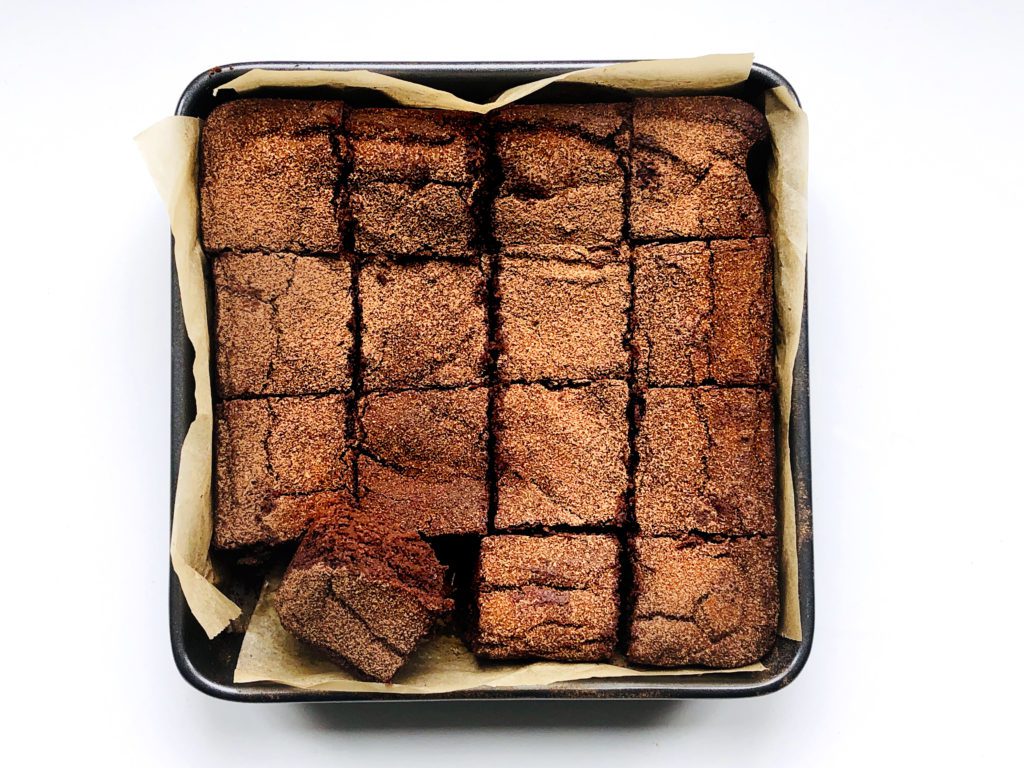Date Sugar Recipe & Nutrition | ‘s Encyclopedia of Food is a sugar-free recipe and nutrition blog that chronicles the journey to better health and the joys of living a life full of meaning and purpose. The content of this blog is dedicated to the natural and holistic approach to health, wellness and nutrition, and the philosophies and principles of a healthy lifestyle.
https://food.com.tw/1878/date-sugar-recipe-nutrition-heres-explanation-food-guide-topic-topic-topic
Date sugar is a sweetener extracted from sugarcane or sugar beet. It is a mixture of sucrose and glucose that occurs naturally in the body of the plant. Date sugar is native to regions of West, Central, and East Africa, where it is used as a sweetener in a variety of foods.
A Quick Look
Dates, the chewy, candy-sweet dried fruit that so many people like, may also be made into granulated sugar or a thick syrup called date syrup. Date sweeteners are used in sweets, marinades, and even poured over roasted vegetables in Middle Eastern and North African cuisines. They have a sweet, somewhat malty, caramel-like taste. Although date sweeteners include small quantities of iron, potassium, calcium, and magnesium, they are mostly a source of sugar. Date sugar and syrup, in comparison to many other sweeteners, are relatively unprocessed sugars that preserve most of the fiber and nutrients of the original whole meal. Be a result, date sweeteners are often referred to as “healthier” sweeteners. Date-based sweeteners, on the other hand, are still rich in sugar and should be used in moderation. Yes, the so-called “healthy sweetener” is still a unicorn. To put it another way, it doesn’t exist.
Overview
Dates, the chewy, candy-sweet dried fruit that so many people like, may also be made into granulated sugar or a thick syrup called date syrup.
Date sugar and syrup are unrefined in comparison to many other sweeteners.
Dates are dehydrated further and then crushed into a powder to produce date sugar, which is a light brown-colored, fiber-rich granulated sugar.
Date syrup is made by boiling whole dried dates and then straining them through cheesecloth. The filtered liquid is then boiled, further reducing the liquid and concentrating the sugars, resulting in a dark, viscous, sweet syrup.
Date sugar and date syrup are more popular in Middle Eastern and North African cuisines, likely because dates are native to these regions. In these traditional cuisines, date sugar and syrup are added to desserts, roasted vegetables, and marinades.
Date sweeteners are frequently referred to as “healthier” sweeteners since they are largely unprocessed and preserve most of the fiber and minerals of the original whole meal. Date-based sweeteners, on the other hand, are still rich in sugar and, like other sweeteners, should be used in moderation.
Identification
Date sugar resembles brown sugar in appearance. Date sugar is light brown in color and has a sweet, somewhat malty, caramel-like taste, similar to brown sugar. Close examination reveals that date sugar is made up of tiny, uneven, somewhat fibrous bits, while brown sugar is made up of rather uniform, angular crystals. Date sugar does not dissolve fully in water since it is produced from whole, granulated dates.
Date syrup (also known as date honey or date molasses) is a thick, transparent syrup with a hue similar to maple syrup and a consistency similar to honey. It has a sweet, rich flavor that tastes like caramel and molasses.
Nutritional Information
Date sugar has 15 calories and 3.0 grams of sugar per teaspoon. Date syrup has 18 calories and 4.0 grams of sugar per teaspoon. Despite traces of iron, potassium, calcium, and magnesium in both, none is a major source of any nutrient other than sugar.
Selection
Date sweeteners are widely available in health food shops and Middle Eastern grocery stores, but as their popularity grows, they may also be found at bigger, more progressive supermarket stores.
Date sugar is often sold in resealable bags, while date syrup (also known as date honey or date molasses) is typically offered in jars or squeeze bottles. Dates should be the sole ingredient stated on the box in both instances.
Note: Date sugar is sometimes confused with date palm sugar, which comes from the dehydrated sap of sugar palm trees, not dates. Other than reading the label carefully, one way to tell the two apart is that date sugar will not dissolve completely in water, whereas date palm sugar will. Because date sugar is made from whole granulated dates, a small amount of sediment will appear when added to water, which comes from the fiber present in the whole food.
Storage
Both date sugar and date syrup have a long shelf life. Keep it cold, dark, and dry in an airtight container. Both date sugar and date syrup have extended shelf lives, but to guarantee freshness, follow the instructions on the box.
Because date sugar draws moisture, it’s critical to keep it well-sealed to keep it from clumping.
Preparation
Date sugar and syrup may be used in a wide range of dishes, including oatmeal, smoothies, baked products, and marinades.
For a similar malty-sweet taste, use date sugar for brown sugar. For a deep, caramel-like sweetness, use date syrup instead of honey, molasses, or agave nectar.
Brownies made with chocolate chickpeas

Look no farther if you’re searching for a delicious snack or dessert. Sweetened with date syrup and sugar, these chickpea brownies are guaranteed to delight. So grab a mixing bowl and get to work! Grab a fork and dig in.
Ingredients
drained and washed chickpeas 2 cans almond butter (14 oz) 1 cup molasses made from dates 3/4 cup sugar made from dates 1/4 cup chocolate powder, unsweetened 10 eggs (tbsp) 2 teaspoons baking soda 1 tsp vanilla essence, with a sprinkling of date sugar a quarter cup
Directions
Time to Prepare: 10 minutes Time to prepare: 35 minutes 16 brownies per batch
Preheat the oven to 350 degrees Fahrenheit (180 degrees Celsius).
Line a 9-inch by 9-inch baking sheet with parchment paper (ensure the parchment paper extends up and over the edges of the pan to provide “handles” for pulling the completed brownies out).
Combine all of the ingredients in a food processor, except the 2 eggs and the date sugar for dusting, in a food processor. Pulse the ingredients in a food processor until they start to come together. Scrape down the sides of the food processor bowl with a rubber spatula and pulse the ingredients together until nearly completely liquid and thoroughly mixed.
Process for 1 minute after adding the two eggs. The batter should be thick and liquid. Scrape down the sides of the processing bowl if required, and reprocess until everything is thoroughly mixed.
Pour the brownie batter onto the prepared baking dish with a spatula, smoothing and leveling it out as much as possible.
Preheat the oven to 350°F and bake the batter for 30-35 minutes, or until the top starts to crack and a toothpick inserted in the middle comes out nearly clean. Remove the baking dish from the oven and set aside to cool for 10-15 minutes on a cooling rack. Then, using a sieve, sprinkle the date sugar on top of the brownies.
Finally, serve the brownies by cutting them into squares. Refrigerate any leftovers.
Book of Free Recipes
Every month, the Encyclopedia of Food grows as we include new delicacies and stunning food photography. Simply click this link to keep up with the latest news. Following that, we’ll give you a complimentary copy of our recipe book. We’ll also notify you when we introduce new and tasty items to the site.
For a free copy of the Encyclopedia of Food recipe book, go here.
Foods That Are Related
1. Go to your local Asian grocery store and pick up some sugar. 2. Put it in a bowl. 3. Rip up a bundle of white onion. 4. Put it in the bowl. 5. Mix it all up until it is all mixed in. 6. Put in a bowl and cover with plastic wrap. 7. Put the bowl in the fridge and wait for it to solidify. 8. Cut the sugar into circles. 9. Put the circles in a bag and freeze. 10. Take out of the bag and put in a bowl. 11. Enjoy!. Read more about date sugar australia and let us know what you think.
{“@context”:”https://schema.org”,”@type”:”FAQPage”,”mainEntity”:[{“@type”:”Question”,”name”:”Can you make sugar from dates?”,”acceptedAnswer”:{“@type”:”Answer”,”text”:”
Yes, you can make sugar from dates.”}},{“@type”:”Question”,”name”:”What can I use date sugar for?”,”acceptedAnswer”:{“@type”:”Answer”,”text”:”
Date sugar is used as a sweetener in many desserts, such as cakes and cookies.”}},{“@type”:”Question”,”name”:”Is date sugar unhealthy?”,”acceptedAnswer”:{“@type”:”Answer”,”text”:”
No, sugar is not unhealthy.”}}]}
Frequently Asked Questions
Can you make sugar from dates?
Yes, you can make sugar from dates.
What can I use date sugar for?
Date sugar is used as a sweetener in many desserts, such as cakes and cookies.
Is date sugar unhealthy?
No, sugar is not unhealthy.
Related Tags
This article broadly covered the following related topics:
- date sugar
- date sugar nutrition
- date sugar where to buy
- date sugar benefits
- date sugar vs coconut sugar



